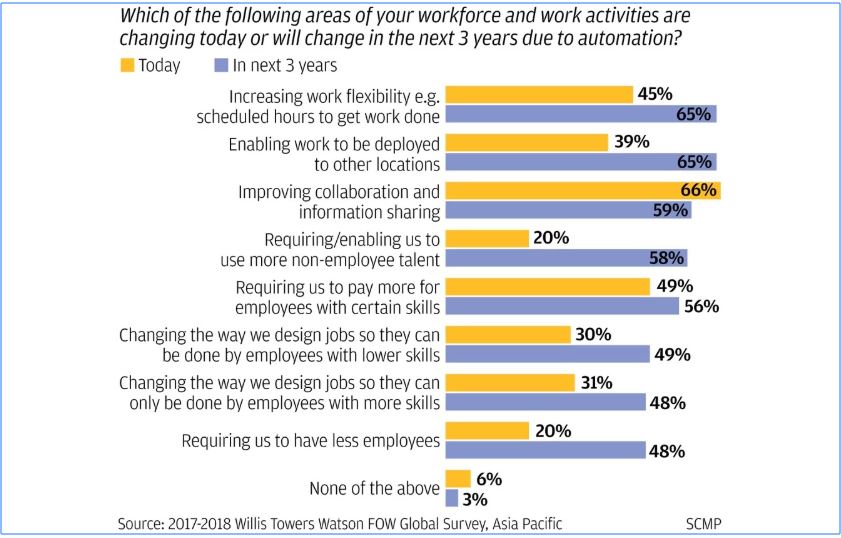Pay gap: Hong Kong women earn more than men before 20 but only half when they turn 60
Thursday, 21 Jun 2018A study by human resources consultancy Willis Towers Watson shows that the use of technology could help reverse that trend, allowing women to hold on to their jobs for longer
The gender pay gap in Hong Kong widens with age because fewer women go on take up senior positions as more women leave the job market earlier than their male counterparts to take care of family, according to a study conducted by human resources consultancy Willis Towers Watson.
Gender pay gap is a collective comparison. It is the difference between the average pay of all men in a company and the average pay of all women in a company, regardless of the type of work they do.
Data gathered from almost 500 companies and more than 250,000 employees in Hong Kong showed that women in their 30s earn 11 per cent less on average than their male counterparts – HK$329,000 (US$41,400) a year compared with HK$369,000 for men. The gap increases further in the 50s age bracket, with women earning about HK$482,000 a year, 25 per cent lower than men who make HK$645,000.
After 60, women on average earn HK$322,000, almost half the HK$618,000 made by men.
However, women under the age of 20 on average earn slightly more than men – HK$122,000 a year compared with HK$121,000 for men in the same age group.
The research also showed that the pay gap shrinks significantly at the same job level, with women earning only up to 5 per cent less than men.
“Our data shows women generally leave the job market earlier than men, leaving fewer women to take up senior roles in companies,” said Wen Wan, senior consultant for talent and rewards at Willis Towers Watson in Hong Kong. “This has led to their average pay package being much lower than men.”
Findings by Community Business corroborates the study. Only 13.8 per cent of the 585 directors of Hang Seng Index constituent stocks were women as of March, according to the Hong Kong-based non-profit organisation committed to advancing responsible and inclusive business practices in Asia. This is lower than the 42 per cent representation of women in Norway, 28 per cent in UK and 21 per cent in the US.
According to Julie Gebauer, head of human capital and benefits at Willis Towers Watson, women account for only 4.6 per cent of chief executives at Fortune 500 companies in the US.
“It’s a global trend that while we have similar number of men and women at the entry level of a company, women tend to leave their jobs earlier than men as they may want to take care of their family,” Gebauer told a media briefing in Hong Kong. “There are many studies that show that companies with gender equality policies tend to perform better.”
But she said that the adoption of technology could help reverse that trend, allowing women to have flexible working hours and hold on to their jobs, she said.
Another survey by Willis Towers Watson of 900 companies worldwide, including 500 in the Asia-Pacific, showed that in the next three years, 65 per cent of companies in the region expect automation to increase the flexibility of employees to work from locations other than the office.
Gebauer said that some energy companies in the US already allow some work that was previously done on site to be conducted from the office or home through the use of virtual reality technology.
Asia-Pacific companies also plan to employee less full-time staff, according to the survey. They expect only 78 per cent of their employees to be full-time in three years’ time, compared with 84 per cent now and hire more freelancers and outside consultants to fill the gap.
This article originally appeared in South China Morning Post, Business Section.


 Attracting, retaining and engaging top talents remain elusive for many employers
Attracting, retaining and engaging top talents remain elusive for many employers
 Relight the fire
Relight the fire